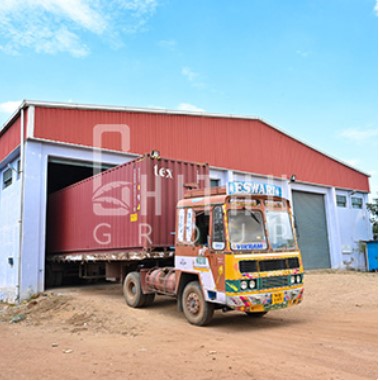Introduction
Coco peat emerges as a silent hero, a natural fiber extracted from coconut husks that has revolutionized global farming practices. Its versatile applications, ranging from soil conditioning to serving as a nutrient-rich growing medium, have propelled coco peat into the forefront of eco-friendly agricultural solutions.
As the world increasingly pivots towards organic and sustainable practices, the global trade of coco peat has witnessed unprecedented growth, transforming it into a crucial player in the agricultural landscape.
This article guides you on a comprehensive exploration of the top 10 coco peat exporting countries, delving into the intricacies of this burgeoning industry.
From the lush coconut plantations of India to the sustainable farming practices in Ecuador, each country on this list plays a unique role in nurturing the global agricultural ecosystem by exporting coco peat. Beyond merely exploring numbers and statistics, we delve into the factors shaping this trade, from government policies and trade tariffs to the evolving landscape of agricultural practices and market demands.
Join us on a journey through the thriving coco peat market, understanding its impact on soil health, its role in sustainable agriculture, and the fast-forward trends that help shape its future.
10 Leading cocopeat Export Countries in the world
-
India: The Coco Peat Giant
India leads the global coco peat market, exporting substantial volumes of this natural substrate. The country’s tropical climate and extensive coconut cultivation contribute to its dominance in the industry.
-
Sri Lanka: A Pioneering Exporter
With its rich coconut cultivation history, Sri Lanka is second in global cocopeat exports. The nation’s commitment to sustainable farming practices enhances its position in the market.
-
Vietnam: Rising Star in Coco Peat Trade
Vietnam has been playing a fantastic game in the coco peat market, leveraging its agricultural expertise and geographical advantages. The country’s commitment to environmental sustainability further boosts its export capabilities.
-
Indonesia: Contributing to Global Agriculture
Indonesia’s diverse agricultural landscape and extensive coconut plantations position it as a critical player in the global coco peat trade. The country’s efforts to meet international quality standards propel its export volumes.
-
Thailand: Harnessing Agricultural Potential
Thailand’s strategic location and agricultural prowess make it a noteworthy exporter of coco peat. The country’s focus on improving farming techniques and sustainability increases its prominence in the market.
-
Philippines: Sowing Seeds of Success
The Philippines, with its abundance of coconut resources, actively participates in the global coco peat trade. The country’s commitment to eco-friendly farming practices contributes to its growing exports.
-
Malaysia: Balancing Tradition and Innovation
With its blend of traditional farming methods and modern agricultural practices, Malaysia plays a significant role in the global coco peat market. The country’s focus on quality and innovation enhances its export capabilities.
-
Mexico: A Newcomer with Promise
Mexico has vigour entered the coco peat export arena, leveraging its agricultural potential and proximity to major markets. The nation’s commitment to sustainable farming practices positions it as a promising player in the industry.
-
Ecuador: Nurturing Sustainable Agriculture
Ecuador, known for its dedication to sustainable agriculture, has become a notable exporter of coco peat. The country’s emphasis on organic farming practices contributes to its success in the global market.
- Bangladesh: A Growing Contributor
Bangladesh completes the list of top coco peat exporting countries, demonstrating significant growth in recent years. The country’s increasing focus on agricultural sustainability propels its standing in the global market.
Other Notable Coco Peat Exporting Nations
While the top 10 countries dominate the global coco peat market, other nations, including China, Brazil, and the Dominican Republic, also contribute to the industry’s growth. These countries showcase coco peat’s expanding reach and importance in global agriculture.
Factors Influencing the Global Coco Peat Trade
Several factors that contribute to the dynamics of the global coco peat trade:
Trade Policies and Tariffs
Government policies and trade tariffs are crucial in shaping the cocopeat market. Countries with favourable trade policies and lower tariffs often experience increased export volumes.
Market Demand and Trends
The rising global demand for organic and sustainable farming practices directly influences the coco peat trade. Changing trends in agriculture, such as increased adoption of hydroponics and organic farming, contribute to market growth.
Soil Health and Agricultural Practices
Coco peat’s positive impact on soil health and its ability to enhance agricultural productivity drive its demand. As farmers increasingly prioritize sustainable and eco-friendly practices, the market for coco peat continues to rise.
Related article: How to use coco peat with soil ?

Sustainable Farming Practices
Coco peat serves as a sustainable alternative to traditional soil mediums. Its ability to retain moisture, provide air, and enhance nutrient retention promotes sustainable farming practices, reducing the reliance on chemical fertilizers.
Horticultural Applications
In horticulture, coco peat is widely used in potting mixes and as a soil amendment. Its lightweight and pH-neutral properties make it an ideal medium for cultivating various plants, contributing to the flourishing global horticulture industry.
Future Trends in Coco Peat Exports
As the global agricultural landscape continues to evolve, several changes in technology and the environment are expected to shape the future of coco peat exports; let us look into each one by one.
Increased Research and Innovation
Ongoing research and innovation in coco peat production methods and applications will likely drive further growth in the industry. Advancements in technology and farming practices will contribute to the sustainability and efficiency of coco peat use.
Environmental Impact and Sustainability
With an increased focus on sustainability, the coco peat industry will likely witness heightened scrutiny regarding its environmental impact. Innovations in eco-friendly harvesting methods and recycling practices may become pivotal for the industry’s long-term success.
Trade Impact Agreements and Alliances
International trade agreements and collaborations between countries are expected to play a significant role in shaping the future of the coco peat market. Bilateral agreements that facilitate smoother trade and reduce barriers are likely to benefit exporting nations.
Conclusion
Hope this article has provided you information on 10 coco peat exporting countries.
The global coco peat trade is a dynamic and evolving landscape driven by the increasing demand for sustainable and organic farming practices.
The top 10 exporting countries and other notable contributors are crucial in meeting this demand and nurturing agriculture and horticulture worldwide.
As the industry grows, stakeholders should stay informed about market trends, trade policies, and environmental considerations.
Are you a bulk buyer looking for importing coco peat to your country ?Chithu Groups is one of the best option. We are one of the leading cocopeat exporter in India, At Chithu Groups, we ensure the quality of coco peat and export it promptly and neatly.
FAQ’s
- What is coco peat, and how is it used in agriculture?
Coco peat serves as an excellent soil conditioner and growing medium in agriculture. Its high water retention capacity and aeration properties make it ideal for enhancing soil structure. Farmers use coco peat to improve soil fertility, promote optimal root development, and provide a sustainable alternative to traditional soil amendments.
- Which country is the largest exporter of coco peat?
India holds the title of the largest exporter of cocopeat globally. With a thriving coconut industry and a commitment to sustainable practices, India dominates in producing and exporting high-quality coco peat. The country’s rich agricultural landscape and robust trade networks contribute to its preeminent position in the international market.
- How does the quality of coco peat affect its export potential?
The quality of coco peat significantly influences its export potential. High-quality coco peat, produced through meticulous processing, ensures better water retention, aeration, and nutrient absorption. Countries maintaining strict quality standards gain a competitive edge in the global market. Consistency in texture, absence of contaminants, and adherence to international guidelines contribute to a positive reputation, fostering trust among buyers and enhancing the export potential of coco peat.
